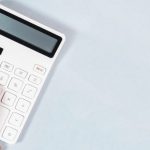Every business owner in their right mind will only drive paid ad traffic to a landing page instead of a website. We already know that landing pages are built for better conversion as compared to a website. But what does it really take to have a high-converting landing page?
First, let’s assume you already have the BIG IDEA, your target audience, and your traffic source figured out. If not, please take the time to go back to your drawing board to clearly outline them before designing your landing page.
The BIG IDEA is simply what you’re offering or what you’re selling on your landing page. Your target audience refers to the group of people you’ve pre-identified to likely resonate with your offer and “buy” it. Lastly, your traffic source is your predefined source of where you will conduct your marketing so your target audience can find your landing page.
We good? Great! Now let’s move on.
There are 5 components to a high-converting landing page and they’re really easy to remember. They all start with the letter “C”.
Clarity
Our first component is Clarity. Put yourself in your target audience’s shoes and imagine them asking “Do I understand the BIG IDEA?” We have about 5-seconds to make it clear what we’re offering and who it is for, the moment someone lands on our page. Consider your Headline, your Sub Headline, your Hero Section Image, or your Attention Banner.
Tip: Write your headline and Sub headlines before building your page. Make sure they clearly communicate your offer and appeal to both emotion and common sense. Avoid big words; keep it simple to help communicate the BIG IDEA
Credentials
Credentials is your first supporting cast in our list of what makes high-converting landing pages. While Clarity is supposed to evoke instant emotional attachment and appeal to common sense, credentials are made to instantly answer a common logical objection, “Is it proven and tested?” or “Has it helped others?”
Your credentials may be any of the following: a publication you were featured in, your education credentials, the clients you’ve worked with, or your 5-star rating. Which one to pick ultimately depends on what matter to your target audience.
Community
Community is probably the simplest of them all and is often complicated. All you have to do is prove that you’ve got a bunch of people already engaged with your offer (product/service). Testimonials and screenshots of praises/conversations with past clients are enough to do the work. The question it answers on your target audience’s subconscious is “Can I trust the information here?”
It lies between logic and emotion. Do people really read the testimonials? Not quite… So, overwhelm your page visitors with a bunch of testimonials to really make an impression.
Curiosity
Clarity, Credentials, and Community are physical components you’ll see on high-converting landing pages. There is, however, a principle that cannot be overlooked. And it’s curiosity.
Most landing pages I see on the internet have the first three C’s but fail to utilize curiosity on the page. Curiosity is WHAT sells the click. It’s not enough that your landing page is clear about what you offer. There’s got to be a punch of curiosity to really make your page visitor want to see what’s behind the page.
Example. Instead of saying “We install CCTVs in residential properties” we can say something like “Have you ever wondered what your dog is doing in your backyard while you sleep? We install CCTVs for dog owners in {City and State here}”.
Call to Action
Lastly, we’ve got the Call to Action, which refers to the “invitation” or what’s written on the landing page buttons. It answers a really simple question, i.e. “How do I get it {the offer}?”
The Call to Action button is easily taken for granted by landing page designers.
It’s like being in the airport for the first time and you just don’t know where you’re supposed to go… It’s easy to feel frustrated and overwhelmed by the situation. And in an online scenario, frustration result in high bounce rates or people leaving your page without completing your desired action.
So take a moment to design clarity on your Call to Action buttons. They’re not just buttons on a page. But a guiding direction on how to proceed.
Conclusion
Your landing page can make or break your sales and marketing campaign. It can be the crucial factor between winning on ad spend or losing money down the drain. So make sure you’re designing conversion-focused pages using the following components: Clarity, Credentials, Community, Curiosity, and Call to Action.











